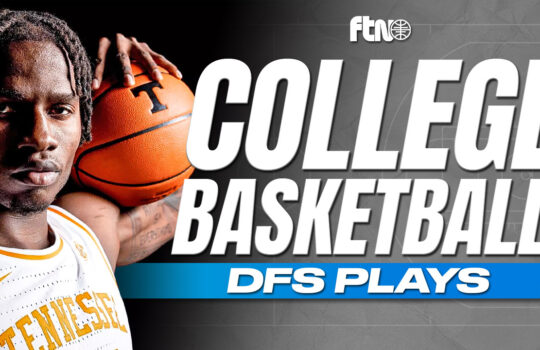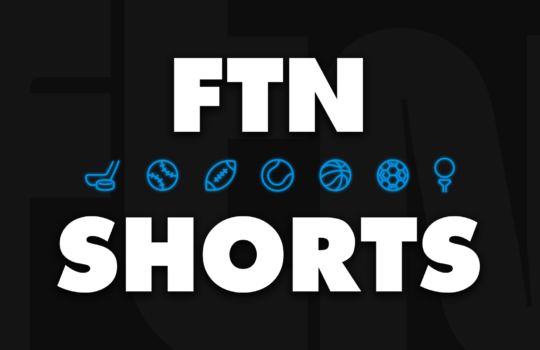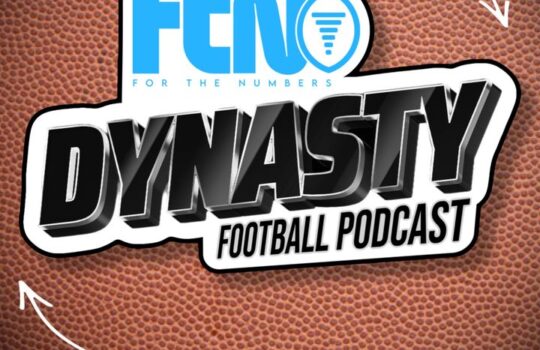
Each week, I’ll review my single-entry NFL DFS lineup, as well as a couple others. I will also track success rates throughout the season. The criteria for the other lineups to make the article (and tracking) will be over 10% of my overall investment. This week, that includes:
- Single-entry lineup
- Thursday-Monday lineup
The goal here is to hold myself accountable for the decisions I make while also helping to provide a blueprint for long-term success in GPPs.
Throughout the year, I’ll emphasize the top 10% and top 1% hit rates. While profit/loss is at the mercy of significant variance at the top of tournaments, these hit rates stabilize much faster and can therefore paint a stronger picture of our performance.
The SE was underwhelming once again (ugh), but I’m excited to talk about my T-M lineup, including my thoughts on that slate on a weekly basis, as well.
The Single-Entry
Every choice we make can be categorized in one of four groups:
- Bad Process, Bad Outcome
- Bad Process, Good Outcome
- Good Process, Bad Outcome
- Good Process, Good Outcome
We’ll begin with No. 1:
Bad Process, Bad Outcome
1. Kareem Hunt
Did you know the Browns were without their two starting tackles? I didn’t, and I’m not quite sure how I missed it, other than the fact that it was under-reported around the industry. I knew Kareem Hunt would only be in line for just a little more rushing opportunity and about the same receiving opportunity as usual, so the matchup was crucial for playing such heavy chalk. The problem — the projected rushing efficiency didn’t factor in the absence of two of PFF’s highest-graded run-blocking tackles.
Lesson learned: News sources like the Sleeper app aren’t sufficient. Fortunately for us, we have FTN’s incredible practice report.
Another thing: I was torn between the Cincy stack and a Kyler Murray/Arizona stack. A Hunt ceiling performance would have been excellent for Arizona stacks, so I shouldn’t have played Hunt unless I chose Kyler and company.
Bad Process, Good Outcome
N/A
Good Process, Bad Outcome
1. Cincinnati/Detroit game stack
Cincy stood out because Joe Burrow and the Bengals had the highest projected yards per attempt according to our new Offensive Efficiency Report. Well, he finished with 9.3 yards per attempt and 3 TDs. This stack failed because Detroit wasn’t able to remain competitive, leading to just 29 pass attempts.
Ja’Marr Chase and Tee Higgins tied for first on the team in targets, but the TDs went elsewhere, and Higgins only caught three balls.
Lastly, what little success Detroit did find mostly flowed through T.J. Hockenson, D’Andre Swift and Amon-Ra St. Brown. A competitive game likely would have meant ceiling outcomes for all three.
Good Process, Good Outcome
1. Travis Kelce
There’s not much to say here. Eight receptions on 11 targets and nearly another 100-yard performance. Travis Kelce was Travis Kelce.
2. Darrell Henderson
Darrell Henderson’s TD equity was way too high for his price, so it was nice to see him come through with two scores.
Thursday-Monday Lineup
First off, yes I’m mad at myself for ruining this lineup with Hunt/Cleveland. More importantly, let’s talk about the Thursday-Monday slate for a second. In my opinion, this slate has the softest/most inefficient ownership in all of NFL DFS. People load up on the Thursday game and overlook the other island games. If Tua Tagovailoa had been on the main slate at minimum price, he would have been chalk. I can say the exact same thing about Diontae Johnson.
Lastly, this is my favorite type of build and I wish it was doable every single week on the main slate — an all-around cheap game stack with high ceiling and expectation plays elsewhere. One of my strongest beliefs when it comes to the correlation of stacking is that ceilings are most positively correlated for cheap stacks. Think of it this way: It’s a lot easier for a pairing like Jaylen Waddle and Mike Gesicki to both go over 20 than it would be for a pair of studs (like Tyler Lockett and DK Metcalf or even Tyreek Hill and Travis Kelce) to each go over 30.
Takeaways
Hindsight is always 20/20, but perhaps there’s a wonderful lesson to learn on projected efficiency vs. projected pace. Last week’s offensive efficiency report is posted below, and what stands out to me is the fact that Dallas/New England actually popped as the second-fastest game.
New England committed to stopping the run, leading to 50-plus pass attempts from Dak Prescott and a slate-breaking performance from CeeDee Lamb. For years, I’ve preached pace over everything in NBA DFS; perhaps NFL DFS merits the same approach.

















































 New York Jets
New York Jets  New England Patriots
New England Patriots  Miami Dolphins
Miami Dolphins  Buffalo Bills
Buffalo Bills  Pittsburgh Steelers
Pittsburgh Steelers  Cleveland Browns
Cleveland Browns  Cincinnati Bengals
Cincinnati Bengals  Baltimore Ravens
Baltimore Ravens  Tennessee Titans
Tennessee Titans  Jacksonville Jaguars
Jacksonville Jaguars  Indianapolis Colts
Indianapolis Colts  Houston Texans
Houston Texans  Las Vegas Raiders
Las Vegas Raiders  Los Angeles Chargers
Los Angeles Chargers  Kansas City Chiefs
Kansas City Chiefs  Denver Broncos
Denver Broncos  Washington Commanders
Washington Commanders  Philadelphia Eagles
Philadelphia Eagles  New York Giants
New York Giants  Dallas Cowboys
Dallas Cowboys  Minnesota Vikings
Minnesota Vikings  Green Bay Packers
Green Bay Packers  Detroit Lions
Detroit Lions  Chicago Bears
Chicago Bears  Tampa Bay Buccaneers
Tampa Bay Buccaneers  New Orleans Saints
New Orleans Saints  Carolina Panthers
Carolina Panthers  Atlanta Falcons
Atlanta Falcons  San Francisco 49ers
San Francisco 49ers  Seattle Seahawks
Seattle Seahawks  Los Angeles Rams
Los Angeles Rams  Arizona Cardinals
Arizona Cardinals 





 Boston Celtics
Boston Celtics  Brooklyn Nets
Brooklyn Nets  Philadelphia 76ers
Philadelphia 76ers  New York Knicks
New York Knicks  Toronto Raptors
Toronto Raptors  Chicago Bulls
Chicago Bulls  Detroit Pistons
Detroit Pistons  Milwaukee Bucks
Milwaukee Bucks  Cleveland Cavaliers
Cleveland Cavaliers  Indiana Pacers
Indiana Pacers  Orlando Magic
Orlando Magic  Atlanta Hawks
Atlanta Hawks  Charlotte Hornets
Charlotte Hornets  Miami Heat
Miami Heat  Washington Wizards
Washington Wizards  Denver Nuggets
Denver Nuggets  Minnesota Timberwolves
Minnesota Timberwolves  Oklahoma City Thunder
Oklahoma City Thunder  Portland Trail Blazers
Portland Trail Blazers  Utah Jazz
Utah Jazz  LA Clippers
LA Clippers  Golden State Warriors
Golden State Warriors  Los Angeles Lakers
Los Angeles Lakers  Phoenix Suns
Phoenix Suns  Sacramento Kings
Sacramento Kings  Dallas Mavericks
Dallas Mavericks  Houston Rockets
Houston Rockets  Memphis Grizzlies
Memphis Grizzlies  New Orleans Pelicans
New Orleans Pelicans  San Antonio Spurs
San Antonio Spurs 










